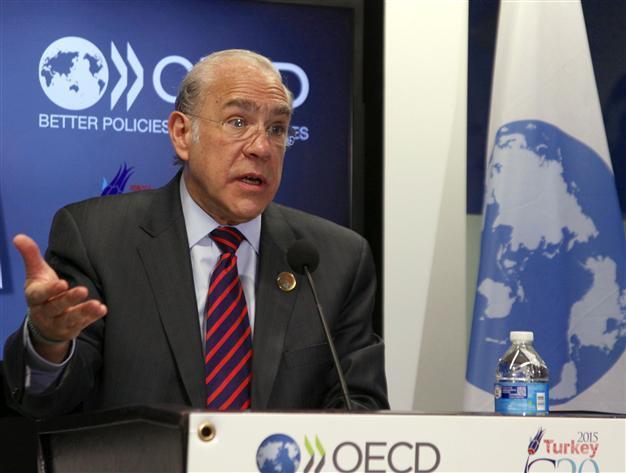Income inequality reaches highest levels since records begin: OECD
PARIS

CİHAN Photo
Income inequality has reached record highs in most OECD countries and remains at even higher levels in many emerging economies, said the organization in a new report. The richest 10 per cent of the population in the OECD now earn 9.6 times the income of the poorest 10 per cent, up from 7:1 in the 1980s and 9:1 in the 2000s, according to the OECD report.The report, In It Together: Why Less Inequality Benefits All, also shows that wealth is even more concentrated at the top than income, exacerbating the overall disadvantage of low-income households. In 2012, the bottom 40 percent owned only 3 percent of total household wealth in the 18 OECD countries with comparable data. By contrast, the top 10 percent controlled half of all total household wealth and the wealthiest 1 percent owned 18 percent.
“We have reached a tipping point. Inequality in OECD countries is at its highest since records began,” said OECD Secretary-General Angel Gurría, launching the report in Paris with Marianne Thyssen, European Commissioner for Employment, Social Affairs, Skills and Labour Mobility.
“The evidence shows that high inequality is bad for growth. The case for policy action is as much economic as social. By not addressing inequality, governments are cutting into the social fabric of their countries and hurting their long-term economic growth,” he added.
Inequality highest in Chile, Mexico, Turkey
Inequality is highest among OECD countries in Chile, Mexico, Turkey, the United States and Israel and lowest in Denmark, Slovenia, Slovak Republic and Norway, according to OECD data. Inequality is even higher in major emerging economies although it has fallen in many including Brazil.
To reduce inequality and boost inclusive growth, the OECD said governments should promote gender equality in employment, broaden access to better jobs, and encourage greater investment in education and skills throughout working life.
The report highlights the need to address working conditions. The increasing share of people working part-time, on temporary contracts or self-employed is one important driver of growing inequality, according to the report.
Between 1995 and 2013, more than 50 per cent of all jobs created in OECD countries fell into these categories. Low-skilled temporary workers, in particular, have much lower and instable earnings than permanent workers, it added. Youth are most affected, said the report, adding that 40 percent are in non-standard work and about half of all temporary workers are under 30.
Another key lesson from the report is that more needs to be done to reduce the gender gap. “The increase in the number of women working has helped stem the rise in inequality, despite their being about 16 percent less likely to be in paid work and earn about 15 percent less than men. If the proportion of households with working women had remained at levels of 20 to 25 years ago, income inequality would have increased by almost 1 Gini point more on average,” said the report.
















